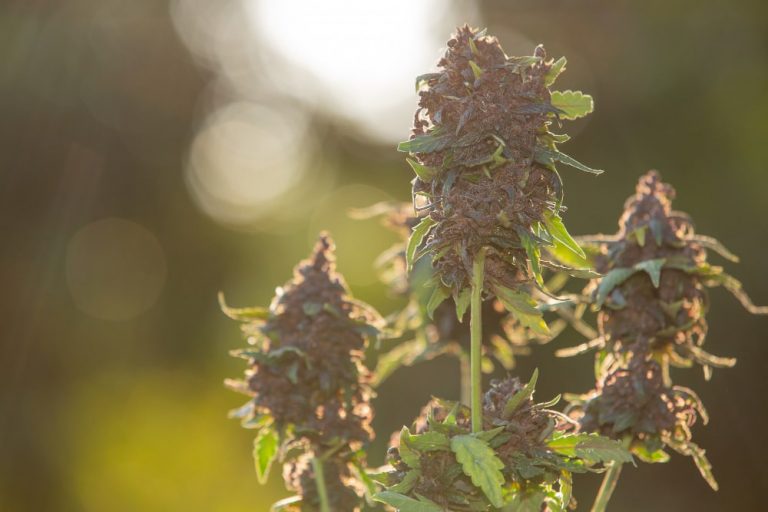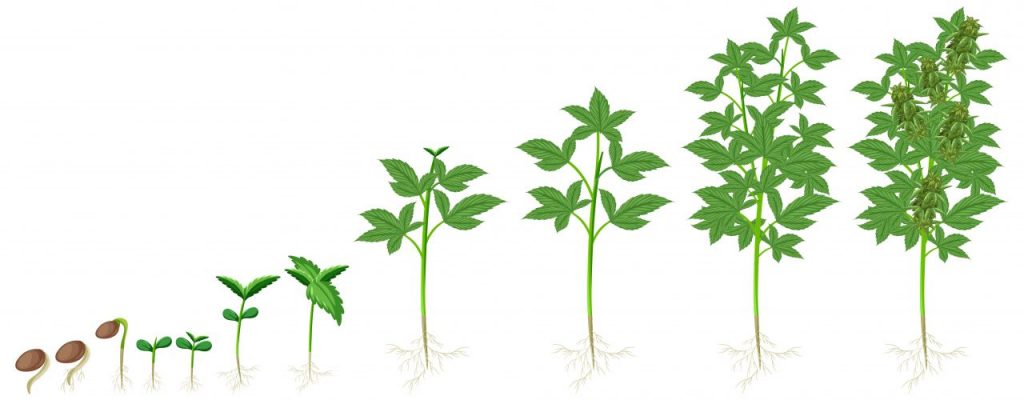Every cannabis plant goes through different growth phases, each of which has its own special characteristics. These phases include the germination and seedling phase, the vegetative growth phase and the flowering phase. You can find out what these special features are here in our blog post. We will focus on the vegetative growth phase of hemp and explain the conditions you should pay attention to when growing indoors in this growth phase in order to achieve a high-yielding harvest.
If you are growing in the Bonsanto Mini Growbox, follow our growing instructions first and foremost. There you will learn how to grow successfully in the Bonsanto grow box.
Inhaltsverzeichnis
Germination and seedling phase
The period in which your cannabis seeds develop into young plants is known as the germination phase. To increase the germination rate, you can moisten the seeds before planting them. You can find out how to germinate your seeds successfully in our blog post “How to germinate seeds”.
During the germination phase, the cannabis seeds absorb water, causing a sprout to break through the seed coat, grow upwards and become visible on the surface of the soil. The first cotyledons can also form during the germination phase. The germination phase is followed by the seedling phase and is characterized by the further development of your cannabis plant. The stem, roots and leaves of your plant grow and the process of photosynthesis begins.
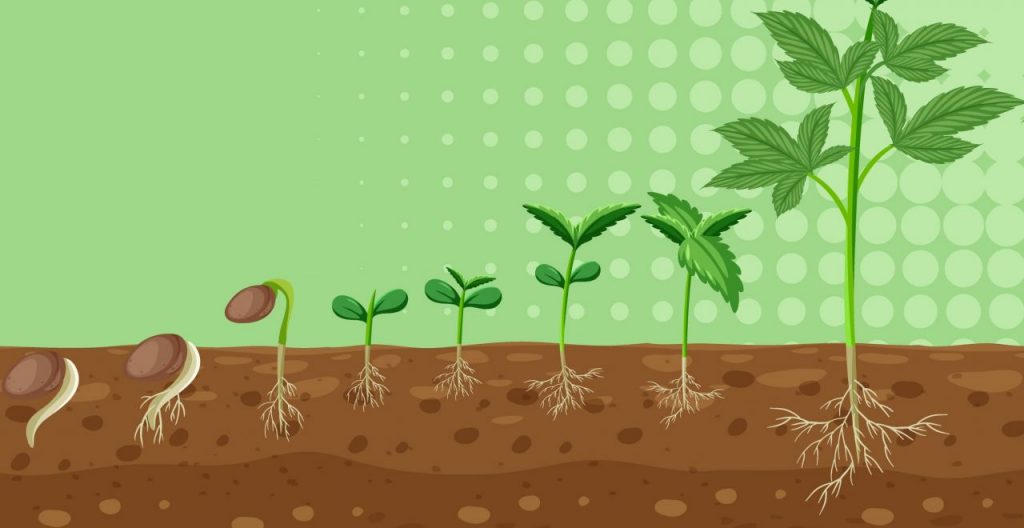
The vegetative hemp growth phase
The vegetative cannabis growth phase is one of the most important phases in the life cycle of your plant and yet is underestimated by some growers. During this phase, your plant grows rapidly in both height and width and the stems, branches and leaves develop. The vegetative phase ends outdoors when summer is replaced by fall. Indoors, you need to simulate this transition yourself by reducing the exposure time from 18 to 12 hours a day.
Importance of the hemp growth phase
Vegetative growth marks an important phase in the life cycle of your cannabis plant. During this phase, your plant develops its full potential and prepares for the subsequent flowering period and harvest. If your plant grows healthily and develops a strong plant structure, this is an important basis for the development of the flowers. A strong growth phase leads to increased flower production and ultimately to a high-quality harvest.
The roots of your plant also develop during the vegetative growth phase. Healthy and well-anchored roots ensure that your plant is optimally supplied with nutrients. Cannabis plants also use this phase to store energy and nutrients that they will need during the flowering phase.
Proper care and providing the right environmental conditions can improve plant growth and reduce the risk of stress and disease.
Conditions for a successful growth phase
For successful vegetative growth of hemp, there are certain conditions that should be met, because as the plant grows, the need for light, water and nutrients also increases. By considering the conditions for successful vegetative hemp growth, you can create optimal conditions to obtain healthy and vigorous hemp plants.
Light & lighting
Hemp plants require a sufficient amount of bright light for their growth. In the vegetative phase, they usually prefer a lighting period of 18 to 24 hours per day. Most growers opt for a cycle consisting of 18 hours of light and 6 hours of darkness. Your plant uses the dark phase for cell respiration, while it carries out photosynthesis during the light phase. Cannabis also requires a bluish light spectrum during the growth phase. To avoid annoying lamp changes in the various cannabis growth phases, it makes sense to buy a plant lamp that reproduces the entire color spectrum and can therefore be used in every phase.
There are various light sources such as fluorescent lamps, LED lights or sodium vapor lamps that are suitable for indoor cannabis lighting. We recommend using an LED plant lamp, as it emits less heat and thus protects your plant from burns and is generally more energy-efficient, durable and cost-effective.
You can set the light cycle using a timer. This saves you time and effort!
Temperature & ventilation
Hemp thrives best at a temperature between 20 and 28 degrees Celsius during the day. Therefore, make sure that your plant’s grow environment is at this temperature. If you grow in a Bonsanto grow box, you have the advantage of not having to use a thermometer, as all Bonsanto grow components are coordinated to provide the optimum environment for your hemp plant.
Also ensure good ventilation to prevent mold growth. You should also get a fan and an activated carbon filter for indoor growing.
Irrigation & nutrients
Adequate watering is also essential. You should water your hemp plants regularly, but not excessively, to avoid waterlogging. Well-drained soil and sufficient drainage are important. But you should also avoid underwatering, as your plant needs the water to grow. As a rule of thumb, you should always water your plant when about 1 cm of the top layer of soil is dry.
A suitable nutrient supply with a balanced fertilizer that meets the plants’ needs during vegetative growth is also crucial. Potassium and nitrogen in particular are substances that your plant needs during the vegetative phase. You can use “Organic Boost” from Bonsanto as a fertilizer, for example. We recommend using this around 2 weeks after germination and stopping when your plant is approaching the flowering stage.
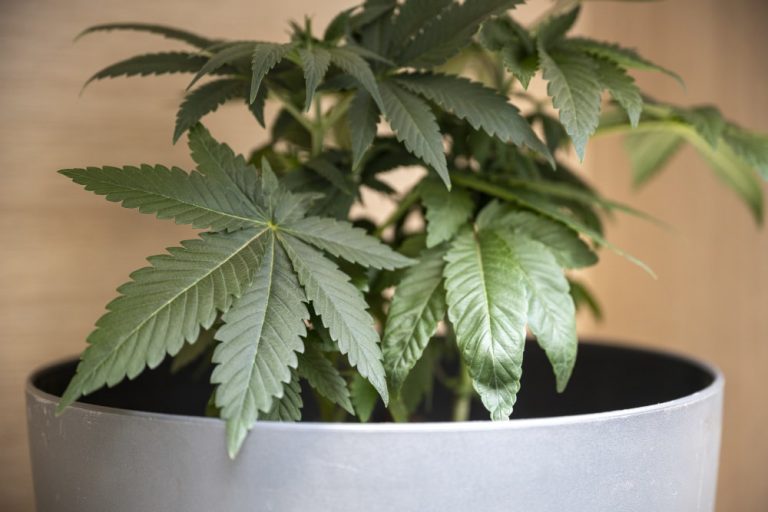
Overview hemp growth phase
Create optimal conditions for healthy plant growth
Use an 18/6 exposure cycle
Use an LED lamp that reproduces the entire color spectrum
Ensure good ventilation to prevent mold growth
The temperature in the grow box should be between 20 and 28 degrees Celsius
Fertilize your cannabis plant as required
Water your plant regularly and ensure good drainage
End the growth phase by shortening the exposure time to 12 hours of light per day
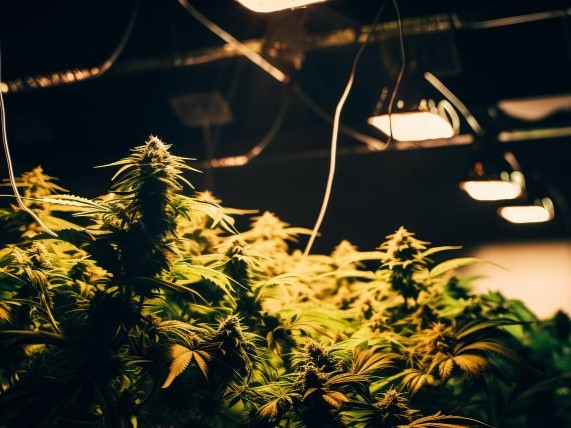
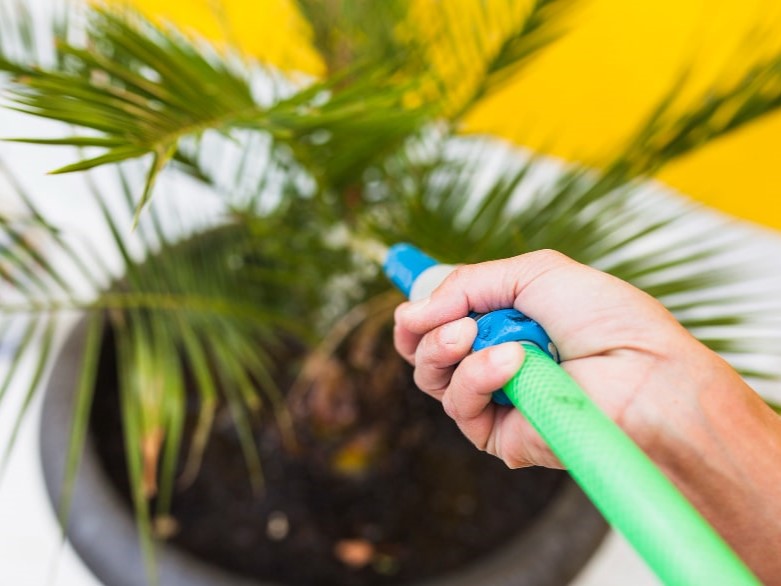
Grow techniques
During the cannabis growth phase, many growers resort to certain grow techniques to specifically increase yield and harvest. It is important not to use grow techniques during the flowering or germination phase, as this can lead to increased stress for the plants. In the flowering phase, the focus is on the development of inflorescences, while the germination phase is the starting point of plant life, when the plants are just beginning to grow. It is therefore advisable to limit these techniques to the vegetative growth phase in order to achieve the best results and optimize the growth of your cannabis plant.
When topping, you remove the tip of the plant during the vegetative phase so that the plant becomes bushier and grows in width instead of height. If you want to focus the growth of your plant on the upper part, you can remove the lower leaves. This technique is known as lollipopping. If you are interested in these pruning methods, you can take a look at our blog on ‘Pruning hemp’.
SCROG (Screen of Green) is also a cultivation technique that is used during the vegetative growth phase of cannabis. It involves placing a net or grid over the cannabis plants to control the side shoots and distribute growth evenly. The branches are guided through the grid and fixed there to create a horizontal plane. This allows for a better light output and promotes the development of many uniform buds, which can lead to a higher harvest.
Flowering phase
At the end of the life cycle, your plant enters the flowering phase. The duration of flowering can vary depending on the cannabis strain and environmental conditions. During this phase, your hemp forms inflorescences that mature during the flowering period. The trichomes on the flowers develop and change color. At the end of the flowering period, your plant is finally ready for harvest! You can find out how to recognize the right time to harvest in our blog post “Harvesting hemp”.
